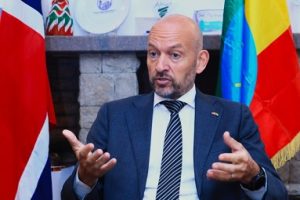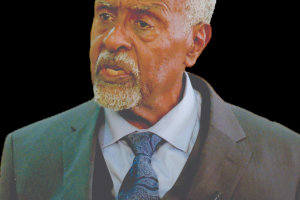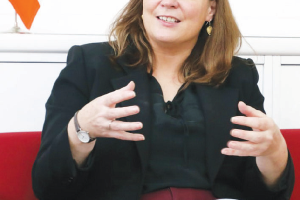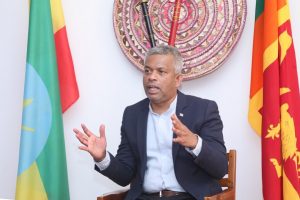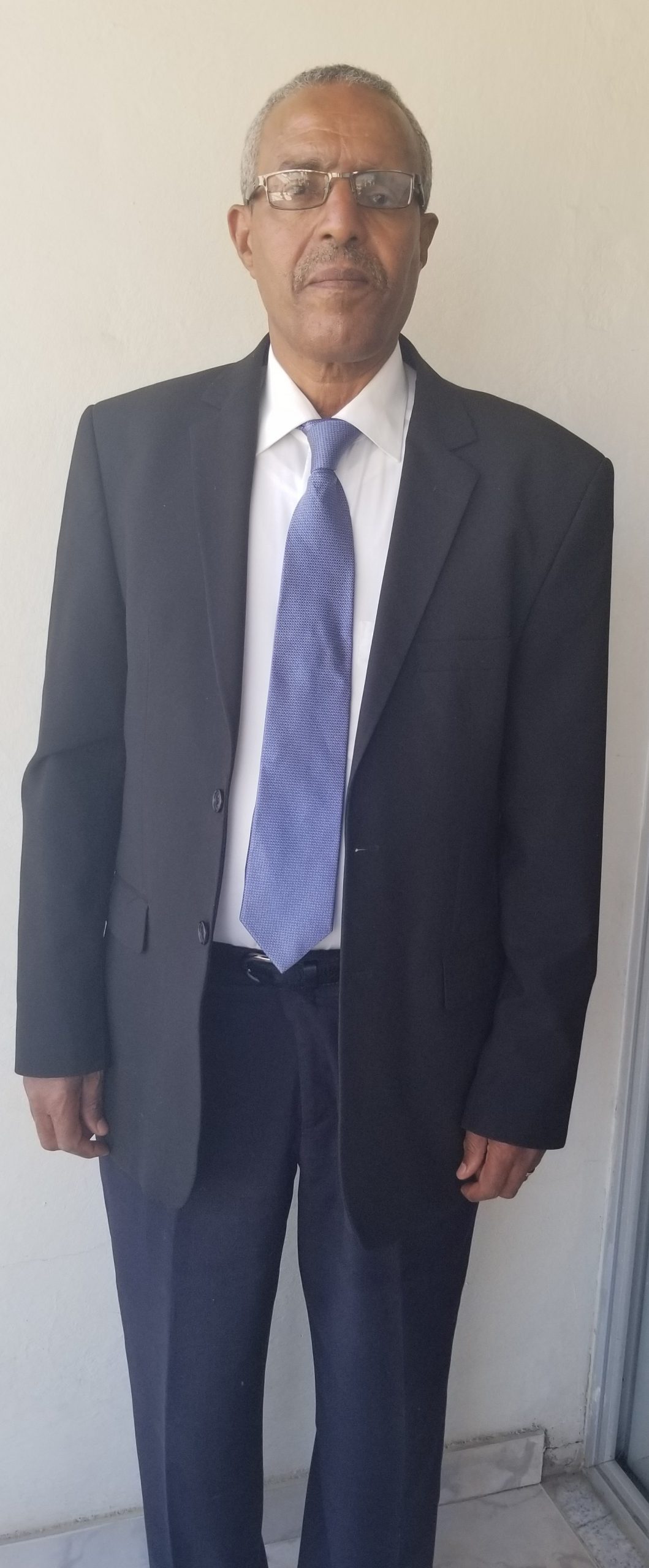
BY ADDISALEM MULAT
Professor Masresha Fetene is an Emeritus Professor of Plant Ecophysiology at Addis Ababa University who has served AAU for the last 34 years. He obtained his Ph.D. in Plant Ecophysiology in 1990 from the Institute of Botany, Technische Hochschule Darmstadt, Germany, and his MSc degree in Botany in 1985 from the School of Graduate Studies, Addis Ababa University.
By the same token, he has several years of teaching experience in both undergraduate and graduate programs in biological, botanical, environmental, ecological, and physiological ecology subjects. He has supervised and mentored numerous Masters and Ph.D. students, producing graduates who have taken important positions at private, international, and government offices, earning national and international recognition.
Professor Masresha served as Vice President for Research and Graduate Studies at Addis Ababa University. He made landmark contributions to enhance research capacity at Addis Ababa. He has published and co-published in peer-reviewed journals, books, and book chapters on various research topics.
He worked as Director and General Editor of Addis Ababa University Press, revamping the Press and publishing numerous historical and academic books and memoirs, biographies, and autobiographies of prominent and historical national figures.
Professor Masresha is a Fellow of the African Academy of Sciences and a Founding Fellow of the Ethiopian Academy of Sciences. Furthermore, he spearheaded the initiative to establish the Ethiopian Academy of Sciences, which he served for six years as Executive Director. He is currently the Co-Chair for Policy of the InterAcademy Partnership (IAP), the international association of Academies of Science, Medicine, and Engineering.
Of late, The Ethiopian Herald had a short stay with Professor Masresha intending to familiarize his personal and professional life with our esteemed readers.
Dear Prof. Masresha – please tell us briefly about yourself and what you are currently doing.
Thank you very much for offering me the opportunity. I am currently Emeritus Professor at Addis Ababa University. I served Addis Ababa University in various capacities, beginning as chairman of the Department of Biology – all the way to becoming Vice President for Research and Graduate Programs of the University for over five years.
I was also Director of Addis Ababa University Press for over six years. But more importantly, as a university professor, the most important task, of which I am proud of, has been supervising the research works of close to 50 MSc and about 15 Ph.D. students. I hope that sums it all.
I believe you were also Executive Director of the Ethiopian Academy of Sciences. Tell us a bit about how the Academy was established, what your role was, and what its objectives are.
That is right. I was Executive Director of the Ethiopian Academy of Sciences for six years from 2014 to 2020. The idea to establish a science academy was on the air for a long time. Nevertheless, the actual steps were taken, when, following an email discussion group I created for the purpose, a group of us came together to form an Ad-hoc committee for establishing a science academy in Ethiopia in 2007/2008.
The Ad-hoc Committee prepared a concept note and organized a consultative meeting of scholars, which then created a Launching Board for the Academy. The Launching Board, of which I was the secretary, developed a draft constitution, selected by merit the first fellows of the Academy, and then called the maiden meeting of the Academy on March 27, 2010. That was how the Ethiopian Academy of Sciences was established.
The objective of the Academy is threefold; to award excellence in science and scholarship through its fellowship program, to provide evidence-based advice to the government on national issues, and to promote science, technology, and innovation through its various programs.
I have seen your impressive Exit Report – can you relate to us what you think is your heritage as Executive Director.
Indeed, I served the Academy with passion. Perhaps my heritage will be the initiation and establishment of different centers within the Academy. These include a Science Center – to inspire the youth in science and create a passion for science, a creative arts center, to promote the arts, a publishing house- to enhance academic publishing in the country, and a library to provide space for building the youth and serve as a repository.
These centers have been created with the full support and engagement of the Board of the Academy and I am sure they will thrive with my successor.
How do you evaluate the overall progress of the Academy in its ten years of existence?
Not so bad actually. In its ten years, the Academy had several programs in the promotion of science and technology, had undertaken close to 30 studies, and provided useful evidence-based pieces of advice to Government on several areas such as education, health, biotechnology, population related issues, agriculture, and forestry, to name a few.
Talking about the last subject you mentioned-forestry – is not forestry your field of research? Yes, it is. My training is in plant ecophysiology. This subject studies the performance of plants in their environment- especially related to environmental stresses.
Although I study stress physiology in crops such as Sorghum and Enset, I also study forest ecosystems and the physiology of our indigenous forest tree species. Most of the Ph.D. graduates I advised are currently in leading positions in forestry in the country.
What has been your research on forest tree species?
The main research questions centered around how our forest ecosystems function. Research questions such as what are the growth requirements of forest seedlings, what are the periodic/seasonal changes – life cycles -that are characteristic of our forest tree species, what are the growth, physiological productivity of our indigenous tree species – including the subject of my research.
What is your take on forestry and forest development in Ethiopia both in the past and the present?
Forestry had its ups and downs. The sector has suffered from institutional instability for a long time. It has come under different ministries at different times, and that had its effect on the continuity of visions, programs, and implementations.
There was a lot of progress in the sector in the 1970s and 1980s when there was a successful concerted effort in plantation forestry. The little commercial timber products that we see currently in the market have their origin from this period.
The sector has obtained significance due to the adoption of the Climate Resilient Green Economy program of the Ethiopian government in the last decade which advocates sustainable forest development- a decrease in deforestation and an increase in reforestation and afforestation.
Nevertheless, mainly due to the poor availability of electricity in much of the country, in 2015 alone, over 115 million m3 of firewood and about 5.4 million m3 of charcoal was extracted from our forests and woodlands, according to a report of the Ministry of Environment, Forestry and Climate Change.
It is worth noting that only an estimated 32.0 million m3 of wood fuel can be sustainably supplied from natural forests and woodlands annually indicating a wood fuel deficit of over 79 million m3 that needs to be supplied from our forests and woodlands. The conclusion is that the widespread and unabated deforestation and forest degradation in the country is a product of our overall poor infrastructural development.
Overall, the effort in reforestation and afforestation has been very sporadic. For much of its long history, the forestry sector did not have much political commitment. The little effort conducted has not been backed by good background research and suffered from a lack of follow-up. Nevertheless, currently, the sector has gained good political commitment from high government officials – especially the Prime Minister.
There is good technical and financial support from several organizations. The excellent work of the REDD+ program and the huge support of Norway and Sweden to the sector is really admirable. I believe if the sector has to take successful strides addressing problems of forestry in this country, the time is now.
What do you say are the main problems of the forest sector in the country?
The forest sector has been beseeched by many problems. The first problem has been the lack of reliable data on the forest resources of the country. The Woody Biomass Inventory Project of the 1990s was one of the first comprehensive sources of data. More recently, the FAO supported national forest inventory, completed in 2017, is providing relatively reliable data.
The outstanding problems have been, the continued high rate of deforestation on the one hand, and the poor performance of national afforestation and rehabilitation efforts, on the other hand. The immediate causes of deforestation are high population growth with increasing demand for forest products, such as fuel wood, charcoal, and construction wood; expansion of agriculture and resettlement programs.
More recently the expansion of large-scale farms, human-induced seasonal wildfires, and illegal harvesting of timber are exacerbating the problem.
There has been a report of increases in forest cover. How do you see that?
Indeed, there has been some effort in afforestation but the more significant increase in percent coverage of forest land has come as a matter of altered definition. Previously, forests were defined as areas with trees of 5-meter height or more with 20 % cover.
Currently, to include trees of lowland areas (the Combretum-Terminalia woodlands of Gambella and Benishangul-Gumuz regions), trees of 2 or 3-meter height with 20% cover, and a minimum area of 0.5 ha, are also considered as forests. Thus the nation’s forest cover has suddenly expanded and it is estimated to be about 15.5% of the total country land area according to the 2014 national inventory.
Nevertheless, this cover is dwindling fast. Recent studies have shown that forest loss in the country is about 92,000 ha/year, while total reforestation and afforestation efforts approximate a mere 19,000 ha/year. This gives a net deforestation rate of 73,000 ha per annum which is alarming by any standards.
What do you think should be done to improve the forest cover of the country, as far as you are concerned? What is expected of relevant government and non-governmental institutions and communities to get the country’s forest cover back on the right track?
The first step to bringing about sustainable forest development is to have a complete and integrated land use policy and land use plan for the entire nation. This, in my opinion, is the basis for any action for reforestation and afforestation programs, also to reduce forest loss while minimizing unsustainable land use and land cover changes.
Second is increasing research on indigenous tree species requirements, forest ecosystem functions, and good seed collection and selection. What to plant where and how to ensure survival during the first crucial years of a tree seedling is best answered through research. The good work started at the Ethiopian Environment and Forestry Research Institute should be expanded and multiplied in the different regions.
Third, the many national forest development plans and programs (of which we have several including REDD+ Programs) need to be implemented in a coherent and coordinated way.
Fourth the sector needs to plan to contribute to the sustainable economic development of the country through creating green jobs, enhancing climate change resilience, through promoting high-value activities such as commercial plantations, non-timber forest products, and sustainable agricultural and grazing practices.
Fifth we need to ensure that there are proper guidelines and implementation procedures and little misalignment in the implementation of federal and regional afforestation programs including the presence of adequate coordination in the control of illegal harvesting of forest resources.
Finally, local communities need to be engaged in participatory forest management and should be primary partners in all forest development initiatives.
Currently, taking the initiative of Prime Minister Dr. Abiy Ahmed, the nation is engaged in a big drive to plant billions of tree seedlings. What do you find attractive in the present drive for tree planting?
This is an excellent initiative. For political commitment, it cannot get any better. The enthusiasm generated is truly unbelievable. Anything that is espoused by high government officials has always a better chance of implementation. No leader of this country has ever been as engaged in tree planting as Prime Minister Dr. Abiy. It is a historical opportunity to seize.
There are many reasons why this campaign is important. The first of these is the fact that it has increased people’s awareness of the benefits of environmental protection and tree planting. The motivation, gusto, and interest we observed, especially in the young, has been phenomenal. We have seen people taking responsibility and planting tree seedlings in thousands in areas designated and provided by authorities. What is also good about the campaign is that it brought the importance of planting fruit trees.
One interesting feature we observed was that some of the seedlings were bought from organized youth who have been raising indigenous seedlings. This is very encouraging. Raising indigenous seedlings is not an easy matter. And yet I have seen several young guys who presented indigenous seedlings in thousands. This is a very valuable engagement and means of livelihood for part of the youth.
What disappointed me was that, despite the claim by responsible authorities, there were never enough seedlings to plant. Both in the 2011 and 2012 kiremt seasons, in some areas, there were not enough seedlings for the people who were out to plant in big numbers. I have seen small shrubs and annuals being planted for lack of tree seedlings.
What all this tells us is that there has not been adequate preparation. You would wish that the areas to be planted would be designated quite in advance, the seedlings to be planted would be early selected based on expert recommendations, and the necessary seedling preparation completed long before the coming of the kiremt season. This is related to the land use planning we talked about earlier.
More importantly, what is critical is the follow-up. I do not believe we have an adequate follow-up system. We have heard from a prominent forester (former head of the Forestry Research Institute) that the number of seedlings planted was 5.3 billion in 2006 EC, 3 billion in 2007, 4 billion in 2008, 3.5 in 2009, 4.3 billion in 2010, and 4 billion in 2011. Add to this the 5 billion planted in 2012.
This is a big figure by any standards. How much of this has been successful is a big question. The reported 84% success rate for seedlings planted in the 2011 kiremt season, in my personal judgment, is a case of over-reporting. This is not very surprising. After all, we have lived, for a long time, through a system that reported more acreage of land covered by crops than the total land available.
An approach to follow is perhaps to apportion (assign) planted areas to rural youth (especially fruit trees) with specific agreements. Creating Afforestation Funds for supporting rural youth engaged in raising indigenous seedlings and protecting afforested areas is worth considering.
What should be done to make citizens residing all over the country take up the enormous enthusiasm and effort put into the plantations by the Prime Minister?
The most critical point is bringing home the realization that Ethiopia’s development is strongly dependent on what we do to protect our forests and afforest our degraded landscapes. The survival of our dams, including and especially the Grand Ethiopian Renaissance Dam, is inseparably tied to sustainable land management of the river basins. The promise of GERD is dependent on what we do now in the Choke mountains, among others. Thus governmental and non-governmental institutions, as well as citizens, need to work in unison and coordination for sustainable development of our forest resources.
Important to note is that forest ecosystem services are directly linked with Ethiopia’s strategic priorities such as food security, productivity, and sustainability of hydroelectric dams, irrigation expansion as well as other growth and development facets, not to mention job creation, peace, security, and stability.
Thus, we should be grateful to the government for the emphasis on forest-based green development. We should all applaud that but should also demand that it be well planned, experts-led, community-based, unfailingly executed, and dutifully followed-up.
Is there anything else you would like to convey as a final point?
Yes- I would like to add that as knowledge expands through information gathered by research, and as research answers our questions, provides guidance and approaches – I recommend that government and society need to provide full support to scientific research.
Thank you very much once again for providing me with the opportunity to share with you my views.
The Ethiopian herald December 19/2020

